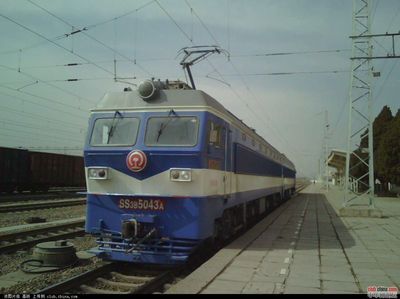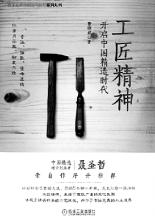作者:美国耶鲁大学管理学院教授陈志武为英国《金融时报》撰稿 2008年8月13日 星期三 在实现进一步增长方面,中国拥有一个未经开发的巨大来源:其庞大的国有资产,包括企业、资源和土地。将这些资产私有化,会释放出财富效应,并推动国内消费。这种改革将改变中国的增长模式:从投资和出口驱动型转为国内消费驱动型。这将降低中国对工业的过度依赖,并刺激其服务业。在此全球经济放缓之际,这样的改革适逢其时。当1978年开始改革时,中国几乎所有的生产性资产都为国有。但自那时起,改革就一直未包括私有化。目前,政府拥有中国70%以上的生产性资产。在改革之初的20年间,将全国资产集中在政府手中,符合一种良好发展的目标,实现了基础设施的建立与工业产能的扩张。如果当时已将国有资产私有化,中国在上世纪八、九十年代的迅速工业化进程中可能难以调配资源。最初“不进行私有化的市场化”方式获得了成功,政府值得赞扬。中国由此拥有了强大的基础设施,并成为了一个工业化经济体。但是,这种工业先行、政府投资驱动、出口导向型的增长模式一直放任自流。偏重于工业(而非服务业)破坏了中国的环境。这也一直是一种资源高度密集型的模式。中国已将出口市场从发达国家拓展到拉美、中东及非洲等地。但以往的这种成功,正限制着出口进一步增长的潜力。经济放缓,加之美国和全球经济中的保护主义日益抬头,使得出口增长不那么容易。为了进行经济转型,中国需要转向内需(而非出口)驱动的、以服务业(而非工业)为主导的增长模式。什么能刺激这种转型?鉴于工业产能已经过高,答案是私有化。决定继续将资源集中在政府手中,将弊大于利。中国的国内生产总值(GDP)一直以高于10%的年率增长,但国内消费的增长速度却一直跟不上。原因何在?一旦我们对以往的收入和财富增长是如何在政府与家庭之间进行分配的加以审视,这个问题就不那么复杂了。首先,政府在中国收入中所占的比例一直在不断上升,而这是以牺牲公民个人利益为代价的。1995年至2007年,政府税收(不包括国有企业利润以及出售土地使用权所得)经通胀因素调整后的年增长率为16%,而同期内城镇及农村家庭可支配收入的年增长率分别为8%和6.2%。2007年,政府税收增加了31%,而城镇和农村家庭可支配收入仅分别增长了12.2%和9.5%。随着私人家庭在中国总收入中所占比例迅速下降,消费增长只会十分缓慢。然而,政府和家庭之间资产所有权的分离,对消费增长的损害甚至更大。诚然,30年的快速增长增加了中国的收入,并大幅提升了资产价值。因此,人们原本可能期望看到这给私人消费带来的显著财富效应。然而,这些收益70%以上都流入了政府腰包,公民个人感受不到太明显的财富效应。除非消费者拥有更多财富,否则私人消费上不可能出现财富效应。无论是中国还是前苏联,所有国有经济体都有一个共同点:经济增长由投资、而非消费驱动,这并不令人感到意外。因此,对于多数中国消费者而言,劳动工资是可支配收入的主要(甚至是唯一)来源。但即便是这唯一的来源,增长速度也不及预期水平。这是私人消费增长缓慢的原因所在。国家所有权抑制了消费需求。此外,基于政府还是私人家庭控制着国家的财富和收入,经济将呈现出不同的需求结构。如果是家庭控制着消费力,他们会更青睐消费品和服务,这将有利于服务业。如果政府控制着消费力,它会侧重于基础设施、工业项目和工业产品,这会推动重工业、能源及自然资源的消费。上世纪八、九十年代,国家所有权有利于促进增长。而如今,对工业的过度投资是一个负面因素。中国将剩余国有资产的所有权在公民中进行平均分配,是至关重要的。这种私人所有权会将缺失的财富效应还给数百万家庭。短期内,这将有助于在全球经济放缓之际保持增长。从长期来看,这将改善中国的工业/服务业组合比例,降低对出口的依赖,同时创造更多的就业机会。的确,东欧的私有化进程短期内令人失望。然而,它之所以遭遇困境,是因为这出现在前社会主义国家——它们此前毫无资本市场、共同基金及相关法律和监管结构方面的经验。中国在这些方面已有近20年的经验。中国的共同基金行业管理着逾1亿个账户。在操作方面,中国已做好了准备。作者是耶鲁大学管理学院(Yale School of Management)金融学教授

译者/陈云飞=================英文原文:======================Privatisation would enrich China Zhiwu ChenWednesday, August 13, 2008 China has a large untapped source of further growth: its vast state-owned assets, including enterprises, resources and land. Privatising these assets would unleash the wealth effect and boost domestic consumption. This reform would transform China‘s growth model from being investment and export-driven to being led by domestic consumption. It would reduce its over- dependence on industry and stimulate its service sector. At a time of a global slowdown, suchreform is timely.When reform started in 1978, almost all productive assets were state-owned in China. But reforms since then have not included privatisation. Today the government owns more than 70 per cent of China‘s productive wealth. During the first 20 years of reform, concentrating the country‘s assets in government hands served a good development purpose, allowing the creation of infrastructure and expansion of industrial capacity. If state assets had been privatised, it might have been difficult for China to mobilise resources during the rapid industrialisation of the 1980s and 1990s. To the government‘s credit, the initial marketisation-without-privatisation approach has paid off. A robust infrastructure has emerged and China is an industrialised economy. But this industry-first, government-investment-driven and export-oriented growth model has run its course. The focus on industry not services has damaged China‘s environment. It has also been highly resource intensive. China has expanded export markets beyond developed countries to include Latin America, the Middle East and Africa. But this past success is limiting the potential for further export growth. The slowdown, coupled with rising protectionism in the US and the global economy is not making export growth easy. To transform its economy, China needs to shift towards growth driven by domestic demand, not exports, and one led by services not industry.What can stimulate such a transformation? Given that industrial capacity is already too high, privatisation is the answer. A decision to continue to concentrate resources in government hands would do more harm than good. China‘s gross domestic product has been growing at more than 10 per cent a year, but its domestic consumption has been slow to catch up. Why? This becomes less puzzling once we examine how past income and wealth gain are split between the government and households. First, the government‘s share in China‘s income has been rising at the expense of private citizens. From 1995 to 2007, the inflation-adjusted annual growth rate was 16 per cent for government tax revenues (not including state enterprise profits or proceeds from selling land usage rights), and 8 per cent and 6.2 per cent, respectively, for urban and rural household disposable income.In 2007, government tax revenues increased by 31 per cent but urban and rural disposable income went up by just 12.2 per cent and 9.5 per cent respectively. As private households‘ share in China‘s income pool is shrinking fast, consumption growth can only be slow. However, the split in asset ownership between the government and households is even more damaging to consumption growth. It is true that 30 years of fast growth has enlarged China‘s income pool and dramatically increased asset values. Thus one would have expected a significant wealth effect on private consumption. However, with 70 plus per cent of this gain going to the government, private citizens have not been able to feel much of a wealth effect. A wealth effect on private consumption is not possible unless consumers own more wealth. It is no surprise that all state-owned economies, whether China‘s or the Soviet Union‘s, have one thing in common: growth driven by investment, not consumption. Therefore wages from labour are the main, or even the only, source of disposable income for most Chinese consumers. Even this single source is growing more slowly than expected. That is why private consumption is slow to rise. State ownership depresses consumption demand.In addition, depending on whether the government or private households control the country‘s wealth and income, the economy will have a different demand structure. If households control spending power they will favour consumer goods and services, which benefits the service sector. If the government controls spending power, it will favour infrastructure, industrial projects and industrial goods, boosting heavy industries and energy and natural resource consumption. In the 1980s and 1990s, these consequences of state ownership were growth-enhancing. Now, the over- investment in industry is a negative. It is fundamental for China to distribute ownership rights of the remaining state assets equally among its citizens. This private ownership would return the missing wealth effect to millions of families. In the short run, it would help maintain growth during a global slowdown. In the long run, it would improve China‘s industry/service sector mix, reduce its dependence on exports and also create more employment. Yes, privatisation has created short-term disappointments in eastern Europe. However, it ran into challenges because it occurred in former socialist countries that had no prior experience with capital markets, mutual funds and the associated legal and regulatory structures. China has nearly two decades of experience in these. Its mutual fund industry manages more than 100m accounts. China is operationally ready.The writer is professor of finance at the Yale School of Management
 爱华网
爱华网



